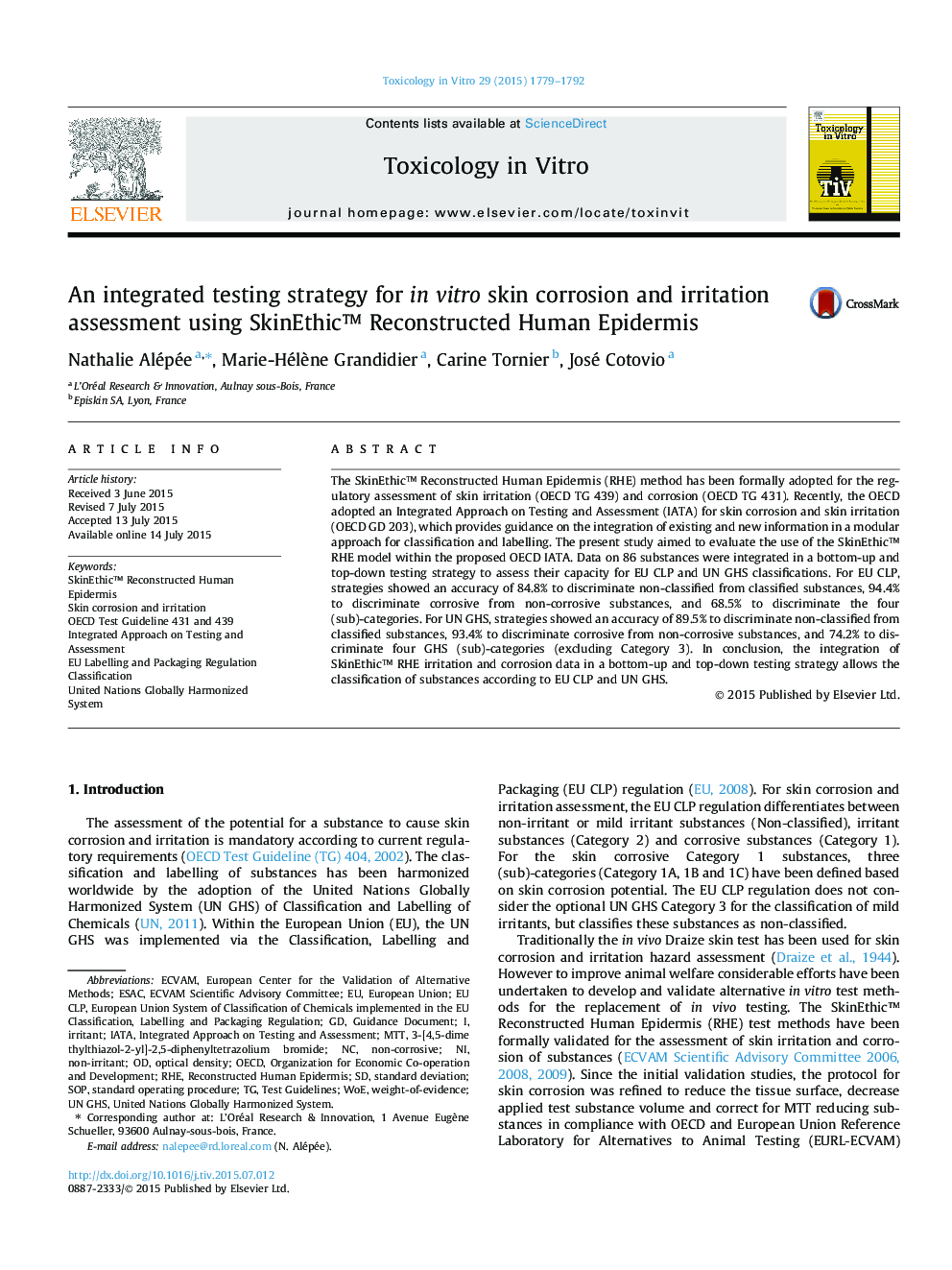| Article ID | Journal | Published Year | Pages | File Type |
|---|---|---|---|---|
| 5861478 | Toxicology in Vitro | 2015 | 14 Pages |
Abstract
The SkinEthic⢠Reconstructed Human Epidermis (RHE) method has been formally adopted for the regulatory assessment of skin irritation (OECD TG 439) and corrosion (OECD TG 431). Recently, the OECD adopted an Integrated Approach on Testing and Assessment (IATA) for skin corrosion and skin irritation (OECD GD 203), which provides guidance on the integration of existing and new information in a modular approach for classification and labelling. The present study aimed to evaluate the use of the SkinEthic⢠RHE model within the proposed OECD IATA. Data on 86 substances were integrated in a bottom-up and top-down testing strategy to assess their capacity for EU CLP and UN GHS classifications. For EU CLP, strategies showed an accuracy of 84.8% to discriminate non-classified from classified substances, 94.4% to discriminate corrosive from non-corrosive substances, and 68.5% to discriminate the four (sub)-categories. For UN GHS, strategies showed an accuracy of 89.5% to discriminate non-classified from classified substances, 93.4% to discriminate corrosive from non-corrosive substances, and 74.2% to discriminate four GHS (sub)-categories (excluding Category 3). In conclusion, the integration of SkinEthic⢠RHE irritation and corrosion data in a bottom-up and top-down testing strategy allows the classification of substances according to EU CLP and UN GHS.
Keywords
EU CLPNon-irritantWOEECVAM Scientific Advisory CommitteeECVAMESACOECDSOPRHEguidance document3-[4,5-dimethylthiazol-2-yl]-2,5-diphenyltetrazolium bromideUN GHSMTTEuropean Unionstandard deviationReconstructed human epidermisIrritantTest guidelinesstandard operating procedureOrganization for Economic Co-operation and DevelopmentWeight-of-evidenceoptical densityIATA
Related Topics
Life Sciences
Environmental Science
Health, Toxicology and Mutagenesis
Authors
Nathalie Alépée, Marie-Hélène Grandidier, Carine Tornier, José Cotovio,
